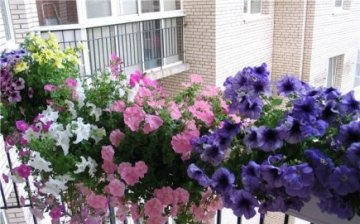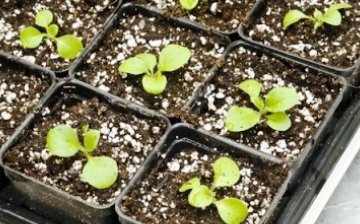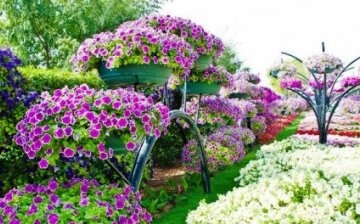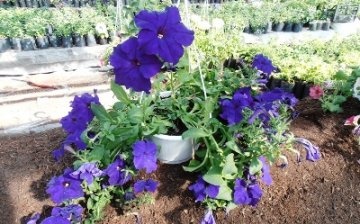The best time and conditions for planting petunias
Remember the Disney cartoon about Snow White and the Seven Dwarfs? Do you remember how she made the Silent Man wash himself with scented soap and one of the gnomes said: "Yes, he smells like petunias!" It was from the very childhood that the scent of petunias is associated with something very magical, fabulous and unforgettable for me. And now I definitely plant these amazing flowers at home - on the balcony and in the flowerbed at the entrance. Petunias are remarkable - they gather strength for a very long time to bloom, but then they bloom until the very first white flies. When is the best time to plant a petunia, so that it pleases for a long time with its wonderful aroma and beauty?
Strange as it may sound, but petunia is a relative of tomatoes and potatoes. Yes, don't be surprised! These wonderful flowers also belong to the genus Solanaceae, as well as the beloved potatoes and tomatoes. And how are these petunia vegetables grown as annuals.
Flowering plants come from countries with warm, even hot climates. The tropics of South America - this is where the beauties of petunias came to us. They can be both herbaceous and semi-shrub plants, delighting everyone with their aroma and variety of colors. It can be strikingly different on one plant from another - from snow white, for example, the White Shar variety, to dark purple, almost black, like the Black Velvet variety.
All petunias, according to their external characteristics, can be divided into four main groups:
- large-flowered petunias
- small-flowered petunias
- ampel petunias
- dwarf petunias
In order that in the climatic zones of our country, petunia pleases with its flowering at the beginning of summer, the seeds must be sown already in the middle of winter. February is the best time to sow plant seeds for seedlings. Since they are too small, they are sown superficially, buried in the ground, but only slightly sprinkled with it, superficially. In order for the petunia to germinate, it needs sunlight, so the seeds are not buried, and the place for growing seedlings is chosen sufficiently sunny - on a well-lit windowsill. Just like light, petunia seeds need warmth. The best temperature for germination will be a warm 23-25 degrees Celsius. This is provided by the construction of a mini-greenhouse - a bowl with sown seeds can be covered with glass, a plastic bag or a plastic bottle cut to the required height. such a greenhouse must be regularly ventilated to prevent the appearance of rot or other diseases. You can use a special white covering non-woven material to arrange the best conditions for the germination of petunia seeds. It lets in sunlight, retains heat, while allowing plants to breathe and not suffer from excessive moisture. By the way, such a shelter allows you to get strong shoots, because sometimes, when a shelter made of film or glass is removed, the plants are so frail that they simply fall to the ground and die.
The temperature regime for those plants that have already grown somewhat stronger can be slightly changed - to reduce the air temperature to + 16-20 degrees. In areas where the winter day is long, additional lighting should be used so that the seedlings do not stretch out, but remain strong and full of vitality.
You can dive petunias when they have two real leaves.This must be done carefully, because the root system of petunia is very delicate, especially at this - "kindergarten" - age.
Petunia shoots appear after sowing quickly enough - within two weeks. But then their growth slows down and they grow very, very slowly, causing constant worries of the grower about whether they will survive, whether they die, or whether they get sick. In order to maintain healthy and strong seedlings, they must be carefully and carefully looked after. you need to water them regularly, but carefully, feed them as needed, observe the temperature and light conditions. After picking, the plants build up the root system, which would then delight those around them with their flowering. This period of seeming rest lasts for about three weeks. Having reached the age of 5-6 weeks, petunia seedlings are actively growing again. In order for the seedlings to have enough "food" all the time, they are fed once every two weeks throughout the entire period of growth. And adult plants are also "gluttonous" and also require constant fertilization.
In order for the plants to feel good in the fresh air, they need to be hardened before being transplanted into the open ground. To do this, somewhere from mid-April, when the snow melts, the pots with seedlings need to be taken out into the street during the sundial. Only with the onset of warm weather - at the end of May, the plants can be taken outside to their permanent residence or planted in the garden.
Good luck!











Yeah .. I thought that the petunia is not so capricious .. But I think it's worth trying to grow it all the same. After all, her flowers cannot leave you indifferent.